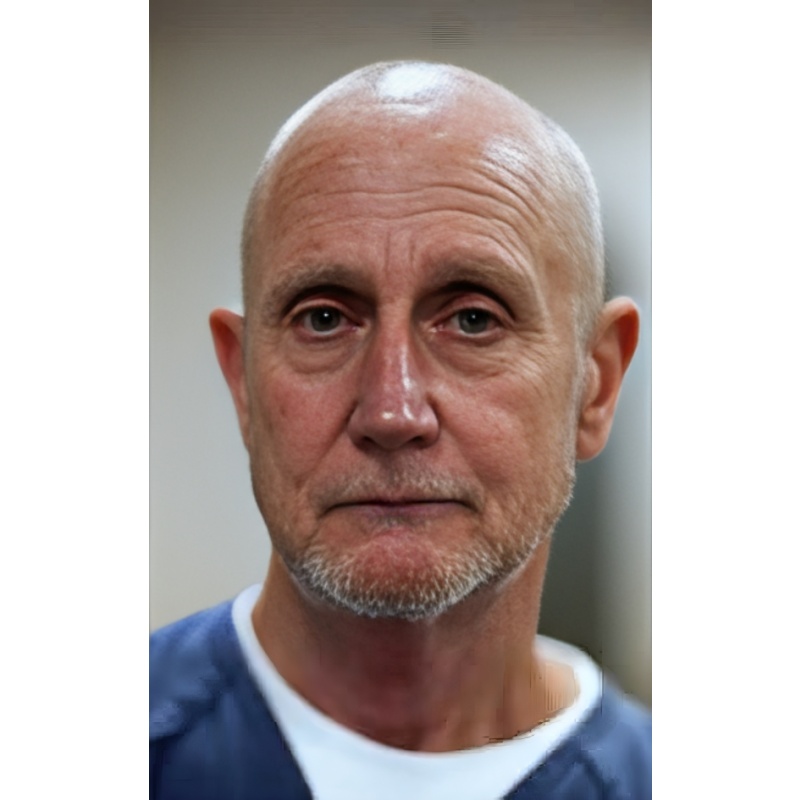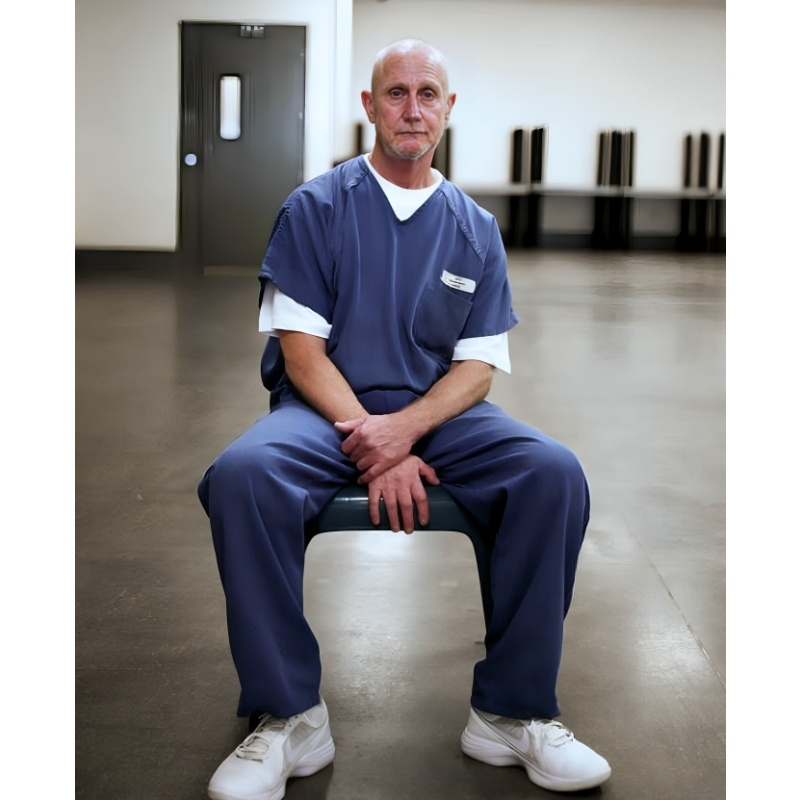MARK RIEBE | Convicted Murderer In Prison, Confessed To Kidnapping And Murdering 13 Women, But Later Recanted These Confessions, Leaving The Exact Number Of Victims Unknown | Autographed Letter, Signed
LongfellowSerenade 27
Mark Riebe is a convicted murderer currently serving a life sentence in Florida. He stepped into the spotlight when 29-year-old expecting mother Donna Callahan went missing from a convenience store in Pensacola, Florida. The case remained unsolved for seven years until Mark's brother, William Alex Wells, who was serving a 30-year sentence for an unrelated robbery charge, confessed to the crime and implicated Mark.
Mark Riebe was ultimately convicted of first-degree premeditated murder and sentenced to 25 years to life in prison in 1998. Surprisingly, while in prison, reports claim that Mark confessed to kidnapping and murdering 13 women, all of whom resided along Florida’s Gulf Coast. However, he later recanted these confessions. The exact number of his victims remains uncertain.
$20.00
- Postage
-
$0.00 to United States
Standard Shipping
Get Additional Rates
- Select Country
- Zip/Post Code
- Quantity
Description
Mark Riebe. Autographed Letter, Signed. Handwritten, Commercial #10 (4.125 × 9.5 envelope). Pensacola FL. Pmk: May 9, 2024. Content unknown. SEALED.
Mark Riebe is a convicted murderer currently serving a life sentence in Florida. He was convicted in 1998 for the first-degree premeditated murder of Donna Callahan, who disappeared from a convenience store in Pensacola, Florida, on August 6, 1989. While in prison, Riebe reportedly confessed to kidnapping and murdering 13 women along Florida's Gulf Coast, but later recanted those confessions. His case is known for the mystery surrounding the exact number of his victims, as he is suspected of being one of the worst serial killers in Florida's history.
Mark Riebe had a background that, on the surface, appeared quite ordinary. He was a resident of Florida and grew up in what seemed to be a close-knit family with three siblings. There were no reports of notable trauma or family dysfunction during his upbringing. After graduating high school, Riebe briefly served in the U.S. Army before returning to Florida. Prior to the disappearance of Donna Callahan, Mark Riebe did not seem to be involved in any criminal activity and did not have a criminal record.
Despite this seemingly normal background, Riebe's actions later in life revealed a much darker side, leading to his conviction for the murder of Donna Callahan and his suspected involvement in the disappearance and presumed murders of several other women. The contrast between his unremarkable early life and his later criminal behavior is a point of interest and concern in understanding his psychological profile.
Donna Callahan was a 29-year-old convenience store clerk who disappeared on August 6, 1989, from the Sunshine Jr Food Store in Gulf Breeze, Florida, where she was working. At the time of her disappearance, she was three months pregnant and a mother to a two-year-old daughter. She had taken over a shift for a sick coworker and was last seen by a witness around 11:30 pm. When she failed to close the store at midnight and set the burglar alarm, the alarm company and her manager were alerted. Upon arrival, they found the store unlocked, empty, and without any signs of struggle. Donna's purse, keys, and car, which contained her gun, were left behind.
The case remained a mystery until July 1996, when Donna Callahan's remains were discovered on a farm in DeFuniak Springs, Florida. This breakthrough came after William Alex Wells, serving a 30-year sentence for robbery, provided information to authorities implicating himself and his half-brother Mark Riebe in the abduction and murder of Callahan. Wells led police to Callahan's buried remains to avoid the death penalty, and both he and Riebe received life sentences for their involvement in the crime.
The motive behind Donna Callahan's murder by Mark Riebe is not explicitly detailed in the available information. However, it is known that Mark Riebe and his half-brother William Alex Wells abducted Donna Callahan on the night of August 6, 1989, and Riebe strangled her to death in the backseat of a car as she begged for her life and the life of her unborn child. The case details suggest that the murder was premeditated, but the specific reasons behind Riebe's actions remain unclear and are part of the mystery that surrounds his crimes.
In many cases involving serial killers, the motives can be complex and multifaceted, often rooted in psychological issues. It's important to note that without a clear statement from the perpetrator or conclusive evidence, the exact motive can be difficult to determine.
The case is particularly chilling as Riebe, after his incarceration, confessed to the killings of 12 additional women besides Donna Callahan, providing details only the killer would know. However, he later recanted these confessions, adding a layer of mystery to the already complex case.
There are unsolved cases that have been linked to Mark Riebe. One such case is the disappearance of Pamela June Ray, who went missing from Panama City, Florida, on August 12, 1992. Although Riebe has not been officially charged in connection with her disappearance, he has been suspected of involvement in several other cases along Florida's Gulf Coast. The exact number of his victims remains a mystery, and some of his confessions have been retracted, adding to the complexity of these unsolved cases.
Mark Riebe is suspected to be connected to several unsolved cases, although he has not been officially charged with these crimes. The cases include:
The 1978 murder of Bonnie Gayle Ryther.
The 1990 murder of Ronda Taylor.
The 1992 disappearance of Pamela June Ray.
Riebe confessed to kidnapping and murdering 13 women along Florida’s Gulf Coast, providing details that only the killer would know. However, he later recanted these confessions. The uncertainty around these cases continues to be a subject of investigation and speculation.
In his confessions, Mark Riebe provided specific and gruesome details about the murders he claimed to have committed. For instance, he confessed to the murder of Jacqueline Brant, stating that he met her at a bar called "The Playground" and left with her. He admitted to getting angry with her, strangling her in the car, and then burying her in a wooded area.
Moreover, within four years of his incarceration, Riebe told detectives about how he killed 12 other women, ranging in age from 15 to 35. He also admitted to murdering Pamela Ray, a mother of two, and claimed to have called her father to tell him about the crime. These confessions included details that, according to authorities, only the killer would know. However, Riebe later recanted these confessions, which has added to the complexity of the cases.
Mark Riebe recanted his confessions for reasons that are not entirely clear. It's possible that he may have experienced pressure or coercion during the interrogation process, or he might have sought attention or notoriety by confessing to crimes he did not commit. Additionally, the psychological state of an individual can be complex, and sometimes people recant confessions due to a change in their mental state or legal advice.
It's also worth noting that false confessions can occur for various reasons, including the desire to protect someone else, the fear of harsher punishment if not cooperated, or the misunderstanding of the situation. However, without a definitive statement from Riebe or conclusive evidence, the exact reasons for his recantation remain speculative.
There are no recent updates available in the public domain regarding ongoing efforts to re-examine Mark Riebe's cases. However, it's not uncommon for cold cases to be reviewed as new investigative techniques and technologies become available. Law enforcement agencies sometimes revisit unsolved cases when there is new evidence or leads, especially in cases involving serial crimes where the perpetrator may be connected to multiple victims. If there are any developments, they would likely be reported by news outlets or through official channels by the law enforcement agencies involved.
VIDEO: Mark Riebe-A Serial Killer’s Confessions & then Recanting to Twelve of Thirteen Women | https://youtu.be/SNXwvvhKgAs
VIDEO: An Interview with a Serial Killer (1/4) | Piers Morgan | https://youtu.be/Z2zGoftG1A
Archiving Protocol:
• Handled with White Gloves ab initio
• Photo Pages/Sheet Protectors: Heavyweight Clear Sheet Protectors, Acid Free & Archival Safe, 8.5 × 11, Top Load
• White Backing Board—Acid Free
Shipping/Packaging: Rigid Mailer 9.5 × 12.5. White, self seal, stay flat, kraft cardboard, no bend. Each rigid mailer is made of heavy cardboard, which has strong resistance to bending and tearing. Thicker that the USPS mailers. Shipping cost never more than it absolutely has to be to get it from me to you.
Payments & Returns
- Payment Methods
- PayPal, Money Order
Postage & Shipping
- Item Location
- 54911, Wisconsin, United States
- Ships To
- Worldwide
- Pick-ups
- No pick-ups
- Returns Accepted
- No








